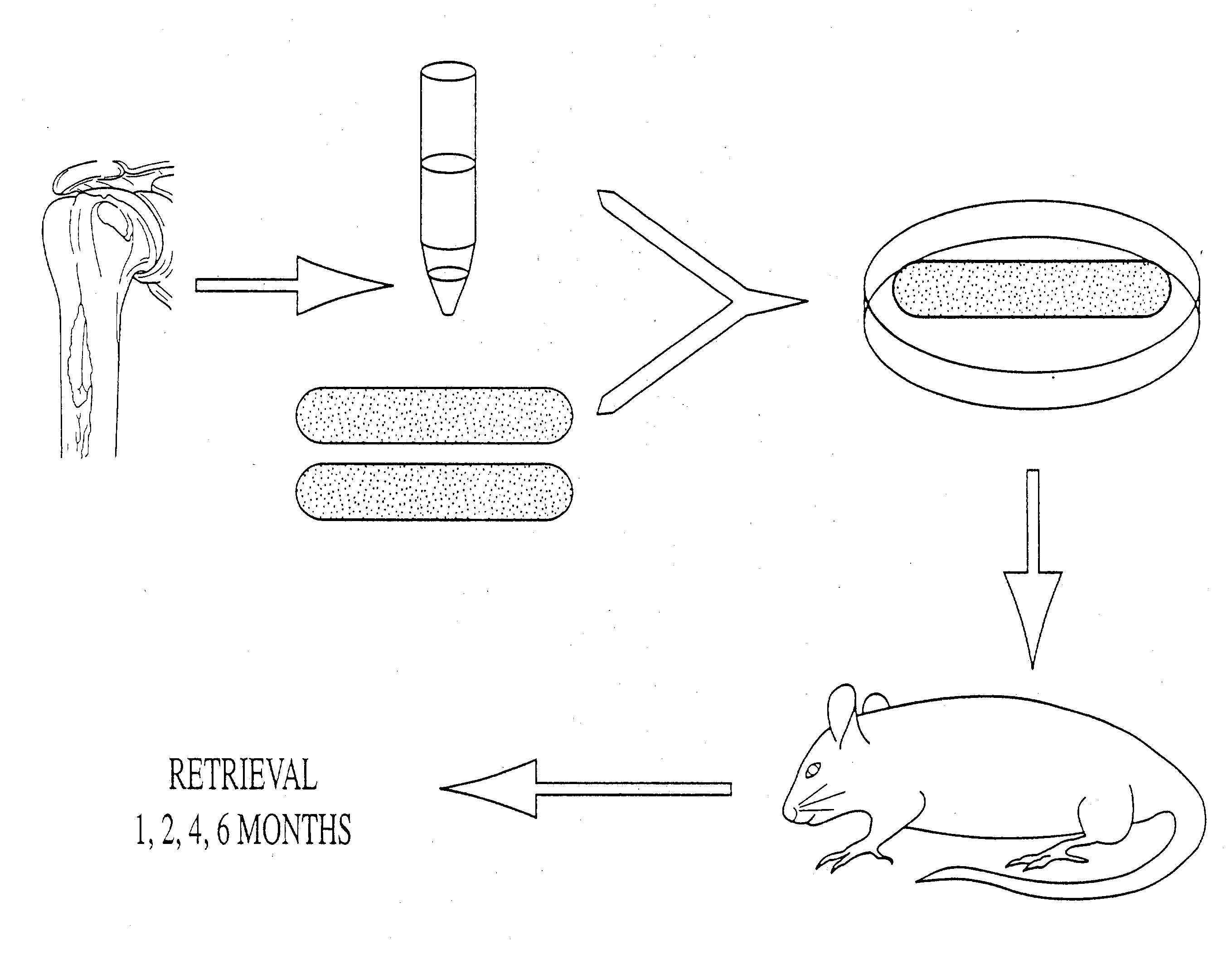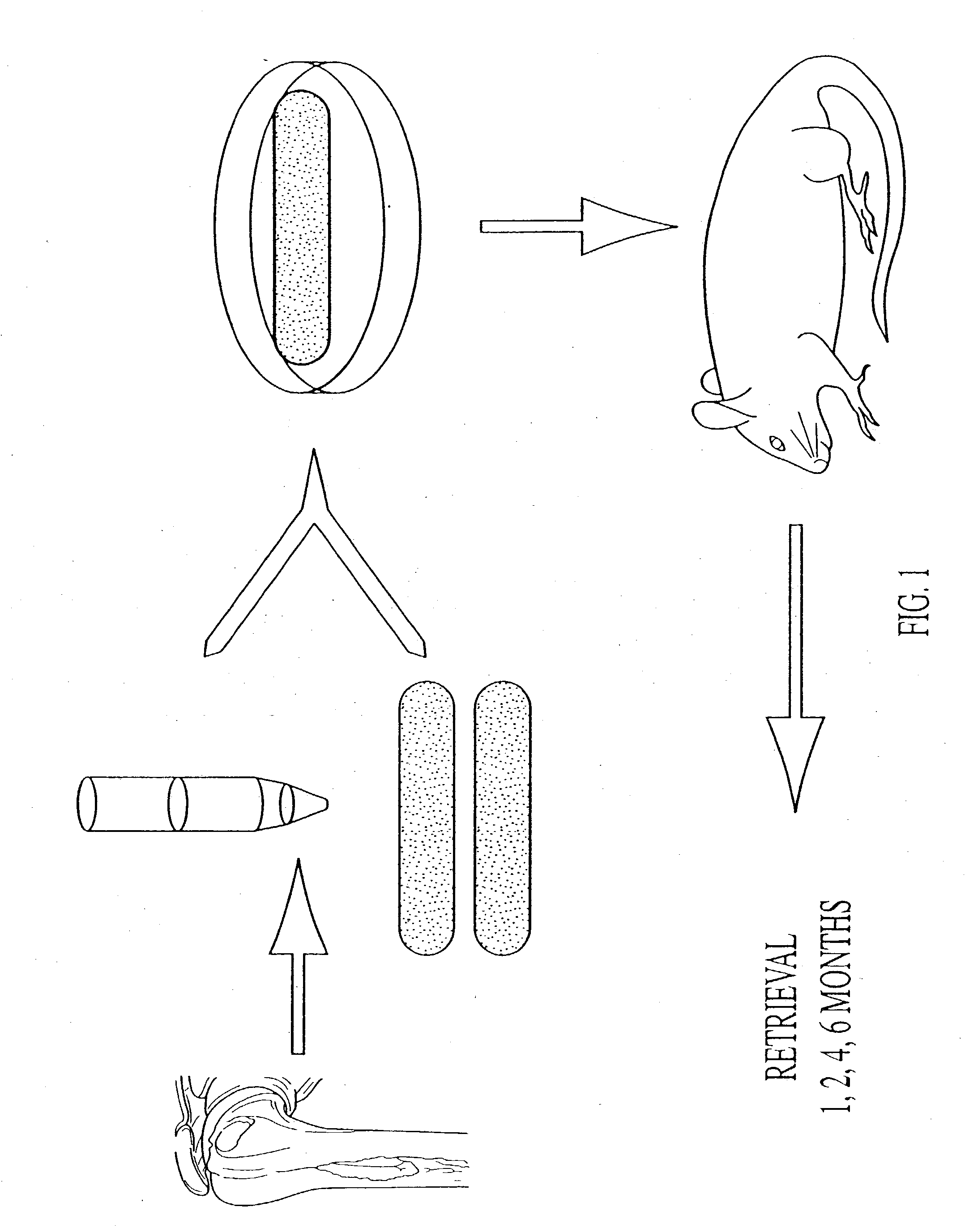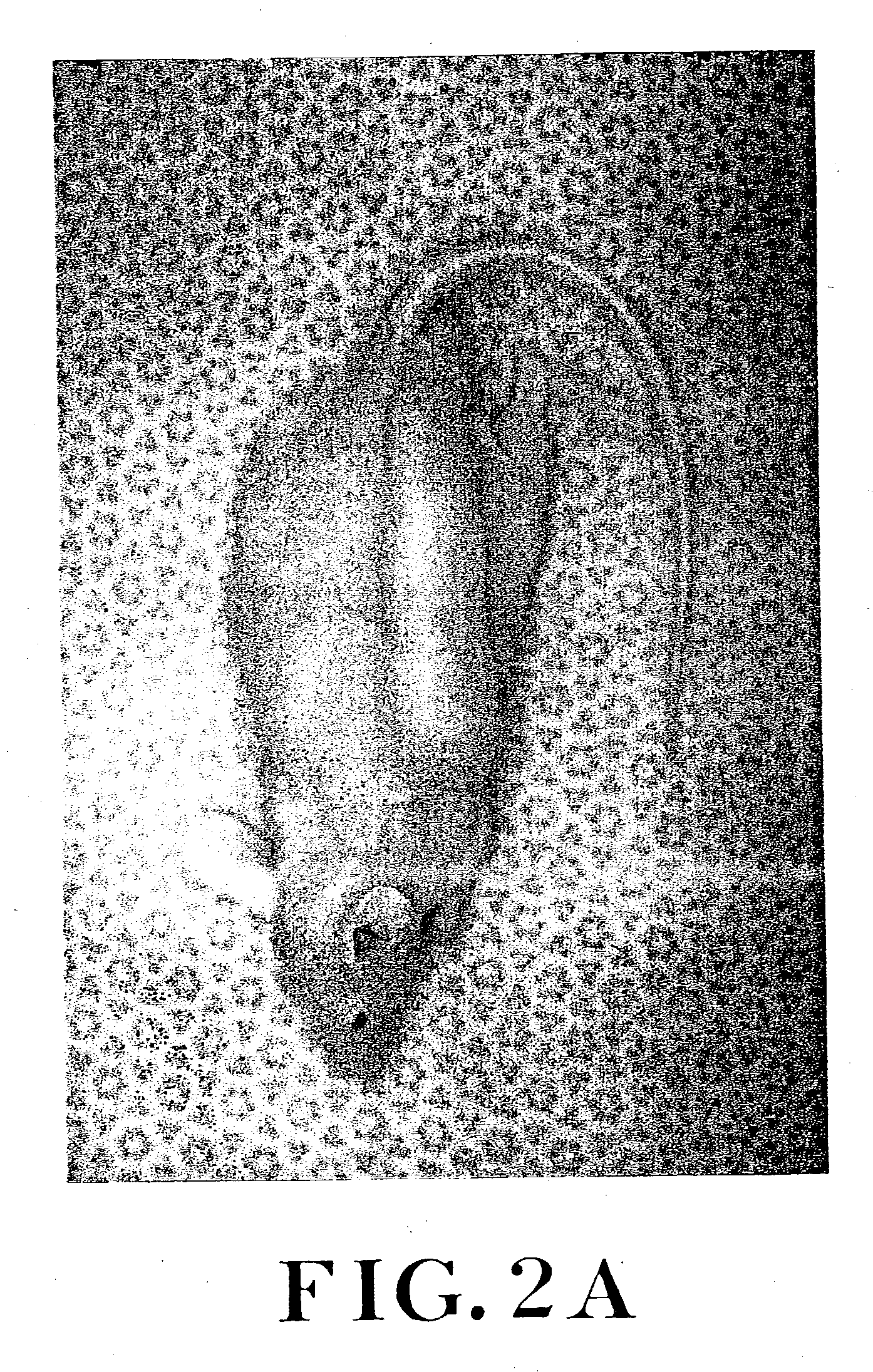Penile reconstruction
a penile and reconstruction technology, applied in the field of penile reconstruction, can solve the problems of multiple stage surgery which did not have a cosmetically satisfactory effect, the loss of the ability to obtain or maintain a functional erection, etc., and achieves the effect of improving the quality of li
- Summary
- Abstract
- Description
- Claims
- Application Information
AI Technical Summary
Benefits of technology
Problems solved by technology
Method used
Image
Examples
example 1
Construction of Polymeric Matrix
[0063] Unwoven sheet of polyglycolic acid felt with a density of about 58 milligrams per cubic centimeter was configured into cylindrical rods of about 1 cm in diameter and about 2 cm or 3 cm in length. The unwoven mesh was composed of fibers with a diameter of about 15 gin, interfiber distance between 0-200 microns and was greater than about 95% porous before seeding. The scaffold was designed to degrade via hydrolysis over a period of about 6 to about 8 weeks. Optionally, the flexible scaffold was coated with a liquefied copolymer (poly-DL-lactide-co-glycolide 50:50, 80 mg / ml methylene chloride) in order to achieve adequate mechanical characteristics. The polymer scaffolds were sterilized in ethylene oxide and kept under sterile condition until cell seeding.
example 2
Cell Culturing and Seeding
[0064] Hyaline cartilage was obtained from the articular surface of calf shoulders. Chondrocytes were harvested under sterile conditions using a previously described technique (Atala, A. et al., J Urol, 150: 745-747, 1993; Atala, A., et al., J Urol, 152: 641-643, 1994; Klagsbrun, M. Methods Enzymol., 58:560, 1979). Briefly, articulating cartilage was obtained from the shoulders of calves under two weeks of age slaughtered earlier in the day. The shoulders were washed in Povidone-Iodine at a concentration of about 10% (Betadine, Purdue Frederick Co., Norwalk, Conn.) solution, then, under sterile conditions, the muscle attachments were sharply dissected from the underlying bone to expose the joint surfaces. The cartilage from the articulating surfaces of the joint were sharply dissected from the underlying bone using a #10 scalpel (Bard-Parker, Rutherford, N.J.). The cartilage was cut into pieces with dimensions of less than about 5 mm per side and washed tw...
example 3
Implantation and Analysis
[0065] A schematic of this study is shown in FIG. 1. A total of 40 polymer scaffolds were implanted in the subcutaneous space of 20 athymic mice. Each mouse had 2 implantation sites consisting of a control (polymer alone), and polymer scaffolds seeded with chondrocytes. Mice were sacrificed at 1, 2, 4 and 6 months after implantation.
[0066] All the animals survived until sacrifice without any noticeable untoward effects. At retrieval, all of the polymer scaffolds seeded with cells formed cartilaginous structures, whereas the control scaffolds failed to form. Gross examination of the retrieved specimens showed the presence of well formed milky-white rod shaped solid cartilage structures which were identical in size (about 1 cm in diameter×about 3 cm in length) to the initial implant (FIG. 2).
[0067] To determine whether the engineered cartilage rods possess the mechanical properties required to maintain penile rigidity, a series of stress relaxation tests we...
PUM
| Property | Measurement | Unit |
|---|---|---|
| Weight | aaaaa | aaaaa |
| Weight | aaaaa | aaaaa |
| Speed | aaaaa | aaaaa |
Abstract
Description
Claims
Application Information
 Login to View More
Login to View More - R&D
- Intellectual Property
- Life Sciences
- Materials
- Tech Scout
- Unparalleled Data Quality
- Higher Quality Content
- 60% Fewer Hallucinations
Browse by: Latest US Patents, China's latest patents, Technical Efficacy Thesaurus, Application Domain, Technology Topic, Popular Technical Reports.
© 2025 PatSnap. All rights reserved.Legal|Privacy policy|Modern Slavery Act Transparency Statement|Sitemap|About US| Contact US: help@patsnap.com



